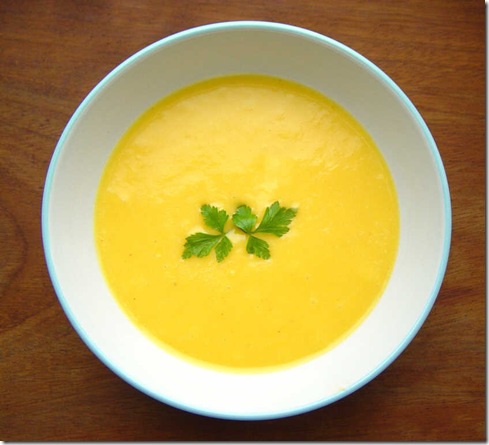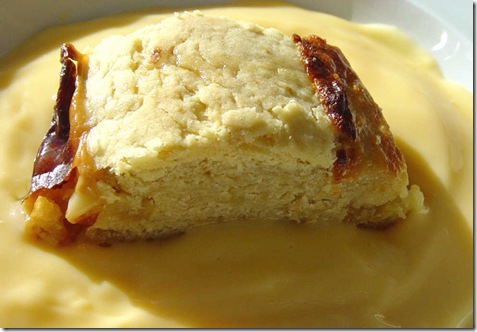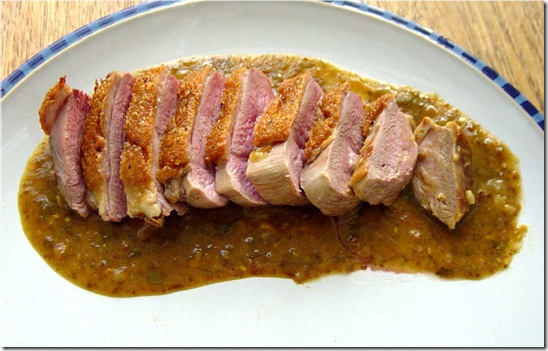Visitandines
When I first came across visitandines I imagined that the name came from the fact that they were the perfect little cakes to take on a visit. That just proves how dumb I can be. In fact the cakes were first produced by nuns of the Ordre de la Visitation which was founded in the 17th century in Annecy. I have to admit that my knowledge of nuns is sketchy to say the least.
The cakes are very similar to financiers but have probably been round a fair bit longer. The key difference is that one is made by pious, peaceful nuns and the other is made for bankers who'd rather have their cake and eat it.
Some visitandine recipes call for browned butter (beurre noisette) and that will give the cakes a very fine flavour, although I think it makes the cakes taste a little too similar to some traditional madeleines. You may prefer them that way, though, so don't let me stop you.

Visitandines are commonly baked in barquette moulds but small, round muffin tins will work very well and may even be more traditional. This will make around 12 cakes, depending on the size of the tins. They keep well in an airtight container.
125 g plain flour, sifted
225 g golden caster sugar
100 g ground almonds
Very finely grated zest of 1 lemon
125 g very soft unsalted butter
200 g egg whites (or around 5 large egg whites)
Preheat the oven to 180°C.
Mix together the flour, sugar, ground almonds and lemon zest in a bowl. Stir in the very soft (and I do mean very soft) butter thoroughly. Don't beat the mixture so much that the almonds become oily, though.
Whisk the egg whites until they form firm peaks. Stir a couple of tablespoons of the egg whites into the mixture until it comes together and is reasonably smooth. Fold in the rest of the egg whites.
Spoon into the tins and bake for about 15 minutes or until a knife blade come out clean and the cakes have taken on a little colour.

Funnily enough visitandines are very good for taking on a visit (or a picnic or country walk) and piety is entirely optional.
The cakes are very similar to financiers but have probably been round a fair bit longer. The key difference is that one is made by pious, peaceful nuns and the other is made for bankers who'd rather have their cake and eat it.
Some visitandine recipes call for browned butter (beurre noisette) and that will give the cakes a very fine flavour, although I think it makes the cakes taste a little too similar to some traditional madeleines. You may prefer them that way, though, so don't let me stop you.
Visitandines are commonly baked in barquette moulds but small, round muffin tins will work very well and may even be more traditional. This will make around 12 cakes, depending on the size of the tins. They keep well in an airtight container.
125 g plain flour, sifted
225 g golden caster sugar
100 g ground almonds
Very finely grated zest of 1 lemon
125 g very soft unsalted butter
200 g egg whites (or around 5 large egg whites)
Preheat the oven to 180°C.
Mix together the flour, sugar, ground almonds and lemon zest in a bowl. Stir in the very soft (and I do mean very soft) butter thoroughly. Don't beat the mixture so much that the almonds become oily, though.
Whisk the egg whites until they form firm peaks. Stir a couple of tablespoons of the egg whites into the mixture until it comes together and is reasonably smooth. Fold in the rest of the egg whites.
Spoon into the tins and bake for about 15 minutes or until a knife blade come out clean and the cakes have taken on a little colour.
Funnily enough visitandines are very good for taking on a visit (or a picnic or country walk) and piety is entirely optional.



What an interesting story, Phil. I have some barquette moulds so will definitely be trying these.
ReplyDeleteWhere we lived in France the nuns made a special cake which you could only buy on Thursdays at the convent. It was called 'scofa' and the recipe is secret! There's always a queue outside waiting for the convent to open its little shop.
Thanks for the reminder about scofa. I came across that cake some years ago but I'd forgotten all about it. Delicious as I recall, but not ideal for anyone on a diet. I like the fact that the recipe is secret, although I think the story goes that the name comes from the initials of the ingredients (in French of course - sugar, caramel, eggs, flour and almonds - at least that's what I assume). I'm sure that some people have tried to recreate the cake based on those ingredients, but I do usually like to let mysteries be.
DeleteI didn't butter my barquette moulds very well and the cakes were tricky to release so don't make the same mistake that I did.
Yes you are right, scofa is the initials of the ingredients - I'd forgotten that. I love that it's secret too!
ReplyDeleteForgot to say that I made some visitandines, buttered my moulds well, and they were delicious. Thanks for the recipe.
ReplyDeleteI have never heard of visitandines - read it as visit and dine - they look and sound delicious. Thanks for the recipe.
ReplyDeleteI'll look out for them when I'm out and about in France. As with other things I think I've never seen, it could be that they have been there all the time and I haven't noticed them.
Actually, they're a bit of a speciality of Lorraine and I'm not sure that they're all that common elsewhere, although I have seen them around now and then.
DeletePhil, it made me so happy to come across a food I've never heard of! I'd make them in the same tin I make my madeleines - my mince pies/jam tarts tin from England.
ReplyDeleteI've been told that the original versions were made in round tins but they'll work just fine in any small tins. This really does seem to be a local speciality that's not too widely known.
DeletePhil, I was intrigued and just had to delve further into it. So I picked out a tin I already had (because I really don't need another "specialty" tin) and formulated a recipe to make precisely 12 visitandines in that tin. And posted it this morning on my blog - check it out! Thank you for telling us about these.
ReplyDelete